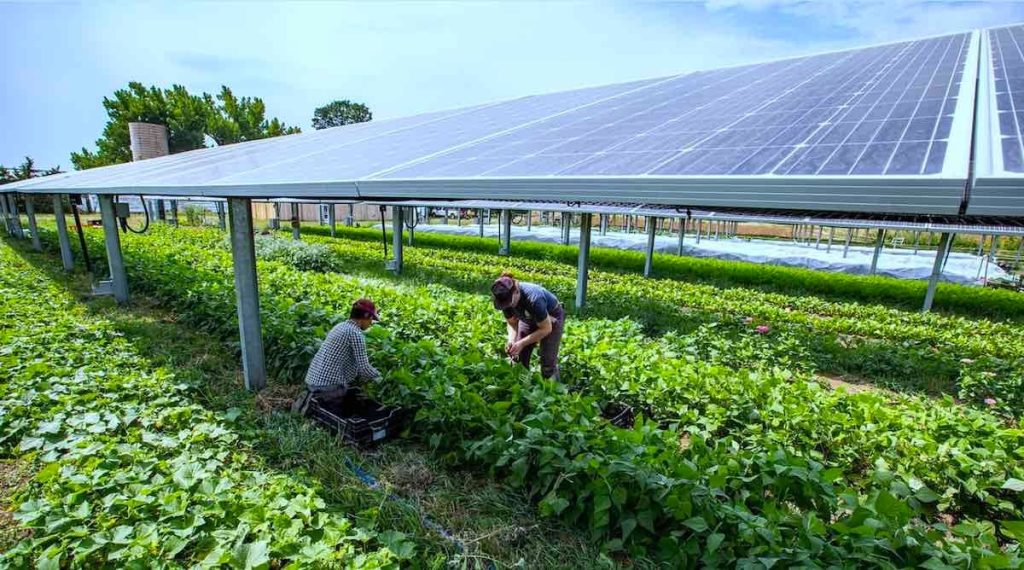Context:
International delegates, attending the International Solar Alliance Session, recently visited a farm site at Najafgarh where the practical implementation of ‘Agrivoltaic Farming Systems’ was showcased.
More on the News
- International Participation: Ministers, mission heads, and delegates from 120 Member and Signatory Countries attended the seventh (7th) session of the International Solar Alliance in New Delhi under India’s presidency and France’s co-presidency.
- Strategic Focus: The three-day event emphasized initiatives to improve energy access, security, and transition toward sustainable energy solutions.
Agrivoltaic Farming System
- Agrivoltaic farming focuses on the simultaneous use of land for both agriculture and solar energy generation.
- In 1981, this technique was first conceived by Adolf Goetzberger and Armin Zastrow, which marked a significant milestone in sustainable agriculture.
- This system creates a microclimate in solar farms that protects crops from extreme weather conditions, reduces soil moisture evaporation and enhances solar panel efficiency by 2-6 degrees.
- The agro-PV installations support both food and non-food crops. These installations also benefit for the horticultural crops, such as leafy greens, root vegetables, legumes and herbs.
Mechanism and Design
Panel Configuration: Solar panels are typically elevated 2-3 meters above the ground at specific angles (usually 30 degrees) to provide optimal shade and weather protection for crops.
System Types: Three basic configurations exist:

- Interleaved arrays and crops
- Arrays elevated above crops/livestock
- Arrays mounted on greenhouses
Light Management: The system requires careful consideration of panel spacing to ensure sufficient light transmission to ground crops.
Infrastructure Requirements: Supporting structures are designed to homogenize radiation distribution on the ground while allowing access to farm machinery.
Significance of the Agrivoltaic Farming System
- This dual land-use system offers a sustainable and reliable solution to land scarcity and acquisition for solar energy, including localised transmission and distribution.
- It improves land productivity by 35-73 per cent, by providing a sustainable solution to land scarcity and acquisition of solar energy.
- It helps in the reduction of soil erosion and land degradation from enhanced soil moisture.
- This system also decreased land-use intensity and reduced emissions from land-use change associated with agriculture.
- It creates an additional source of revenue for the farmers by the sale of power.
Some Examples to boost Agrivoltaic Farming Systems
- South Korea: Successful cultivation of broccoli under photovoltaic panels, resulting in deeper green colouration and maintained quality.
- Kenya: Implementation of elevated solar panels with strategic spacing enables farmers to grow high-value crops in previously unviable land.
- France: Pilot project in Amance featuring over 5,000 solar panels capable of producing 2.5 megawatts at peak times.
- Japan and China: Leading commercial implementation of agrivoltaic systems with proven economic viability.
- India: Various projects are under construction viz. Amrol Distributed Solar Power Project (Gujarat), CAZRI plant in Jodhpur (Rajasthan) under PM-KUSUM Scheme.

